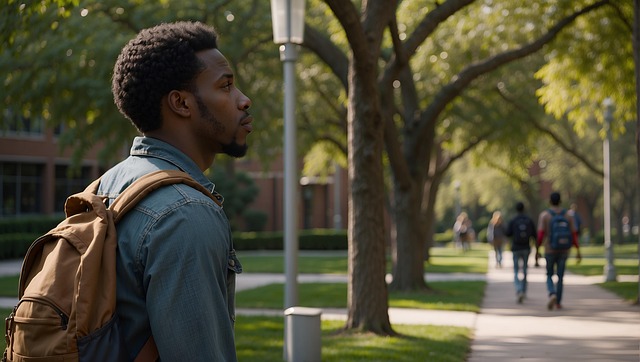Top universities in global cities like London and New York significantly influence local student rental markets by attracting international students with diverse housing options. These cities offer affordable living, cultural experiences, and vibrant nightlife, creating dynamic interconnected student rental markets. Key factors include university density, geographic location, and off-campus housing preferences, while navigating local laws and best practices is crucial for success.
“Uncover the top university cities dominating the global student rental markets. From bustling metropolises to vibrant academic hubs, we explore where students are flocking to for affordable housing near their campuses. Discover how factors like university rankings and unique local attractions shape these thriving rental destinations.
This comprehensive guide also delves into navigating legalities and best practices, offering essential insights for both students seeking accommodation and landlords managing student rentals.”
- Top Universities and Their Thriving Student Rental Markets
- Global Cities Attracting Students for Affordable Living
- Unique Housing Options in Popular Student Destinations
- Factors Influencing Student Rental Market Trends
- Navigating Local Laws and Best Practices for Rentals
Top Universities and Their Thriving Student Rental Markets

Top universities often find themselves in bustling cities, attracting students from all over the globe. These academic institutions not only contribute to the cultural vibrancy of their surrounding areas but also stimulate the growth of thriving student rental markets. Cities like London, with renowned universities such as Oxford and Cambridge, see a high demand for student accommodation due to their international appeal. Similarly, New York City is home to prestigious schools like Columbia University, driving up competition for rentals among students seeking convenient access to campus.
The presence of top-tier universities creates a dynamic environment where student rental markets flourish. These markets cater to diverse needs, offering everything from cozy studios to shared apartments, often located close to campuses. Students benefit from the convenience of nearby dining options, study spaces, and social hubs, while landlords and property managers find a steady stream of tenants, ensuring a robust real estate sector.
Global Cities Attracting Students for Affordable Living

In today’s globalized education landscape, many students are drawn to international cities for their affordable student rental markets. These urban centers offer a unique blend of cultural experiences and cost-effective living options, making them appealing destinations for students from around the world. Cities like London, Berlin, and Amsterdam have thriving student communities and well-established student rental sectors, catering to diverse budgets and preferences.
The affordability factor is a significant draw, as these global cities often provide excellent value for money compared to other metropolitan areas. Students can access top-notch amenities, vibrant nightlife, and cultural attractions while enjoying relatively lower living expenses. This trend has led to a diverse mix of residents, fostering an enriching environment where students from various backgrounds come together, creating a dynamic and interconnected student rental market.
Unique Housing Options in Popular Student Destinations

Popular university cities often boast diverse and unique housing options tailored for students, contributing to their vibrant student rental markets. Beyond traditional flats and shared houses, some destinations offer one-of-a-kind choices. For instance, many European cities have historic buildings converted into student accommodations, providing a glimpse into the region’s rich architectural heritage. In North America, it’s not uncommon to find student communities within renovated industrial spaces or lofts, fostering a sense of urban living.
These alternative housing arrangements not only cater to students’ need for affordable and convenient options but also enrich their overall experience by immersing them in diverse neighborhoods. Whether it’s a charming cottage in a tree-lined street or a modern apartment with communal study spaces, these unique student rental markets add character and charm to the academic journey, making each city a memorable destination for students from around the world.
Factors Influencing Student Rental Market Trends

Several factors play a pivotal role in shaping trends within the student rental market. One significant influence is the number of universities and colleges located in a city, which directly correlates with the demand for student housing. Cities housing multiple educational institutions often experience higher rental rates as students seek accommodation close to their campuses.
Geographic location and local amenities also contribute to market dynamics. Proximity to transportation hubs, shopping centers, and recreational areas can enhance a neighborhood’s appeal, driving up rental prices. Furthermore, the availability of off-campus housing options compared to on-campus accommodations can impact rental trends, as students may prefer certain locations for their convenience and cost-effectiveness.
Navigating Local Laws and Best Practices for Rentals

Navigating local laws and best practices is crucial when entering a student rental market. These regulations, often referred to as landlord-tenant laws, vary from city to city and protect both tenants and landlords. Understanding these rules is essential for ensuring fair and safe renting experiences. In many cities, student rentals are considered a specialized sector within the real estate market, with unique considerations due to students’ specific needs and financial situations.
Best practices in student rental markets include clear communication, detailed lease agreements, and prompt maintenance responses. Landlords should offer transparent terms, outlining expectations and consequences for late rent or property damage. Tenants, on the other hand, must commit to responsible renting habits and maintain open lines of communication with their landlords. This mutual respect fosters a positive living environment, benefiting both parties in the long run.






